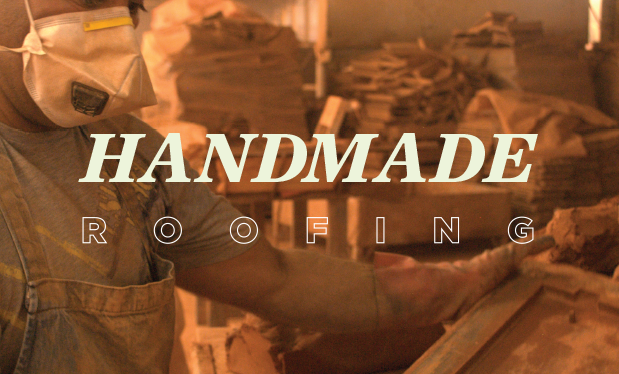Study links poor sleep to increased injury risk
Colorado State University researchers have identified a connection between poor-quality sleep and the risk of construction workplace incidents and injuries, according to www.safetyandhealthmagazine.com.
The researchers asked construction workers from two public works departments in Portland, Ore., to complete three surveys during a 12-month period. The data was collected as part of an Oregon Healthy Workforce Center study, and it was used to determine respondents’ self-reported sleep quality and quantity before it was compared with subsequent reports regarding safety behavior and workplace injuries.
The study found respondents who reported more insomnia symptoms experienced more cognitive failures at work on average, such as lapses in attention, memory or action. Workers who experienced more failures also had an increase in minor injuries and a reduction in required and voluntary safety behaviors.
The construction workers’ cognitive failures included not remembering correct work procedures or whether equipment was turned off; unintentionally pressing a control switch on machines; stopping or starting the wrong machine unintentionally; and daydreaming instead of listening to a co-worker.
“Organizations, especially safety-sensitive ones like construction, should care about their employees’ sleep because it can impact the safety of the workplace and put workers at risk,” says Rebecca Brossoit, a co-author of the study and CSU graduate student. “There’s a business case for caring about sleep.”
The study is scheduled to be published in the Journal of Occupational Health Psychology Nov. 29.
Research analyzes link between climate change and heat deaths

|
Construction workers accounted for 36% of all occupational heat-related deaths from 1992 to 2016 despite making up only 6% of the total U.S. workforce, according to www.ishn.com. New research from the Center for Construction Research and Training shows climate change may be a contributing factor.
The researchers analyzed heat-related deaths in the Census of Fatal Occupational Injuries in relation to time, region and temperature and to explore a possible association with climate change.
Findings included:
- Increasing summer temperatures in the contiguous U.S. were associated with higher heat-related death rates.
- The annual number of heat-related deaths in construction rose significantly over time.
- Hispanic workers—in particular, workers born in Mexico—had a higher risk of heat-related death.
- Roofing workers and helpers were seven times more likely to die from heat than the average construction worker.
- Cement masons were 10 times more likely to die from heat than the average construction worker.
Allowing construction workers to acclimatize to hot weather and providing access to water and rest breaks could help reduce the number of heat-related fatalities in the construction industry. According to the researchers, enhanced surveillance, as well as improved regulations and enforcement, should accompany broader efforts to combat global warming.
Metal Construction Association creates the MCM Alliance
The Metal Construction Association has created the MCM Alliance, a group focused on increasing awareness of metal composite material for the architectural building envelope.
Metal composite material is formed by joining two thin metal skins to a polyethylene or fire-retardant core and bonding them under a precise temperature, pressure and tension. The process makes metal composite material light and flexible. Introduced more than 40 years ago as aluminum composite materials, the metal composite material product category has evolved to include natural metal skins such as zinc, copper, stainless steel and titanium.
The MCM Alliance supports product performance testing, initiates research, and promotes education and actions to influence public policies for the use and growth of metal composite material in the marketplace. The MCM Alliance includes technical and marketing committees from six MCA member companies that manufacture metal composite material and 11 fabricators that engineer and fabricate metal composite material.
BUILD magazine recognizes NRCA as a trusted trade association
BUILD magazine has named NRCA the Most Trusted Construction Trade Association as part of its Construction & Engineering Awards 2019.
According to BUILD magazine, the Construction & Engineering Awards honor companies and organizations in the construction and engineering sector that form the backbone of the industry, working daily to build a better future for all.
“We are honored to receive this recognition,” says Reid Ribble, NRCA’s CEO. “Since 1886, NRCA has responded to its members’ needs and worked to improve the roofing industry for all stakeholders. For more than a century, we have built our reputation around the trust of those in the greatest industry in construction. Thank you, BUILD magazine, for this recognition.”
NRCA and the Roofing Alliance to hold fall meetings
NRCA and the Roofing Alliance’s Fall Meetings will be held Nov. 12-15 at Trump International Hotel & Tower in Chicago.
During the meetings, NRCA committee members, Roofing Alliance members and other roofing industry professionals will meet to discuss NRCA and the roofing industry.
A schedule of events is available at www.nrca.net/news-events/calendar.
For more information, contact Bennett Judson, NRCA’s vice president of meeting services and executive director of the Roofing Alliance, at (800) 323-9545, ext. 7513 or bjudson@nrca.net.
National Safety Council releases opioid resources for employers

|
For the first time in U.S. history, a person is more likely to die from an accidental opioid overdose than a motor vehicle crash, according to the Occupational Safety and Health Administration. Seventy-five percent of employers report being directly affected in some way by employee opioid misuse yet only 17% feel extremely prepared to address the issue.
To close this gap, the National Safety Council has developed the Opioids at Work Employer Toolkit, a suite of materials for employers that includes resources for four specific groups found in a typical workplace setting: supervisors, human resources professionals, safety professionals and employees.
The toolkit includes sample policies, fact sheets, presentations, safety talks, posters, white papers, reports, videos and more so employers can implement a workplace program regarding opioids.
The materials are intended to help employers understand how opioids affect the workplace; recognize signs of impairment; educate employees regarding the risks of opioid use; develop drug-related human resources policies; and support employees struggling with opioid misuse.
The Opioids at Work Employer Tookit is available at www.nsc.org/pages/prescription-drug-employer-kit.
Former NRCA CEO Bill Good remembers NRCA member Rob McReynolds
 McReynolds McReynolds
|
The ancient Greek Cyrenaics, it is said, never wrote obituaries. Instead, they judged the value of a person’s life by whether he or she lived it with passion.
The Cyrenaics would have loved longtime roofing industry professional Rob McReynolds, who passed away Sept. 17.
First and foremost, Rob had a passion for his family. His two daughters felt his passion every day—whether it was traveling hundreds of miles to watch college volleyball games or just challenging them to always be the best they could be.
His wife, Barb, reached an accommodation with Rob at some point in their marriage: He would go out with his friends Friday nights, and she would wait for him to call to give him a ride home. Why would she do that? She understood he needed to have time with friends for whom he would do anything.
Rob had a passion for the roofing company he built. Not every day at D & D Roofing was a good one, especially if Rob felt you weren’t living up to his expectations.
“I think I might have made a mistake,” he told me one day. “I fired my whole residential department.” They simply weren’t working up to Rob’s incredibly high standards. (He hired them all back, of course, his point being made.)
Rob sold his business a couple of years ago and almost immediately had some seller’s remorse. He had built a family, he told me, with his people and hated to see them plugged into jobs they didn’t want. It is telling that the company’s revenues declined 40% after Rob left.
He also had an unending passion for the roofing industry. His competitors admired him because while he was a fierce competitor, he always put the interests of the industry first.
And he had a lifelong passion for his favorite sport—wrestling—at which he excelled both as a high school athlete and as a coach. One of the teams he led had a three-year record of 107 wins and zero losses. His great love was for the University of Iowa’s wrestling team, a longtime force in college wrestling. That passion continued all his life, and Rob was instrumental in raising $10 million for a new wrestling center at the university.
Rob had the blessing and curse of learning he had four months to live this past June. He decided to spend that time Living—with a capital L—traveling, seeing old friends, making new ones and spending as much time as possible with his wife, daughters and friends.
He also continued his work, up to the end, with the University of Iowa wrestling program. That organization established a new award to annually be presented to one of its wrestlers forever after: the Rob McReynolds Passion Award.
Perfect. May he rest in peace.
Bill Good is NRCA’s former CEO.
Construction firms work to meet needs of an aging workforce
As the construction industry faces a skilled labor shortage and an aging workforce, construction firms are trying to keep experienced older workers—ages 55 and up—happy and healthy, according to www.enr.com.
Data from the Center for Construction Research and Training shows workers aged 45-64 made up nearly 40% of the construction workforce in 2015. The average age of construction workers—now nearing 43—has risen at a faster pace during recent years than the average age of all workers.
Many older workers are putting retirement on hold, often for economic reasons. Although workplace injury research consistently has shown older workers to be less vulnerable to injury, that could be changing. A recent National Council on Compensation Insurance study found construction experienced the largest percentage decline of workplace injuries in any industry. However, the decline was slower among older workers compared with younger workers. The study also found older workers have a higher proportion of injuries from “falls, slips and trips” and a lower proportion of injuries from “contact with objects or equipment.”
Rosemary Sokas, a professor of human science at Georgetown University and a frequent CPWR study collaborator, says contractors with a comprehensive approach to job-site safety are more prepared to address potential age-related risks.
"If you make a workplace safer for everyone, you’re going to make it safer for older workers, too,” she says. “Planning for specific projects is the key.”
Some construction firms make workplaces safer by offering frequent breaks for water and shade; providing wellness programs that incorporate organized stretching during the day; considering job-site logistics, such as providing well-lit work areas and eliminating ladders when possible; emphasizing ergonomics; allowing older workers the opportunity to work on off-site prefabrication, which can be less strenuous; positioning older workers as mentors; and offering greater work schedule flexibility.
Mark Hansen, a risk consultant with Contek Solutions LLC, Plano, Texas, says awareness of and openness to new ideas and different approaches will benefit workers of all ages and must be communicated regularly and effectively.
“Continually remind your workers that if they need help, to ask for it,” Hansen says. “And that the message applies to everyone.”



